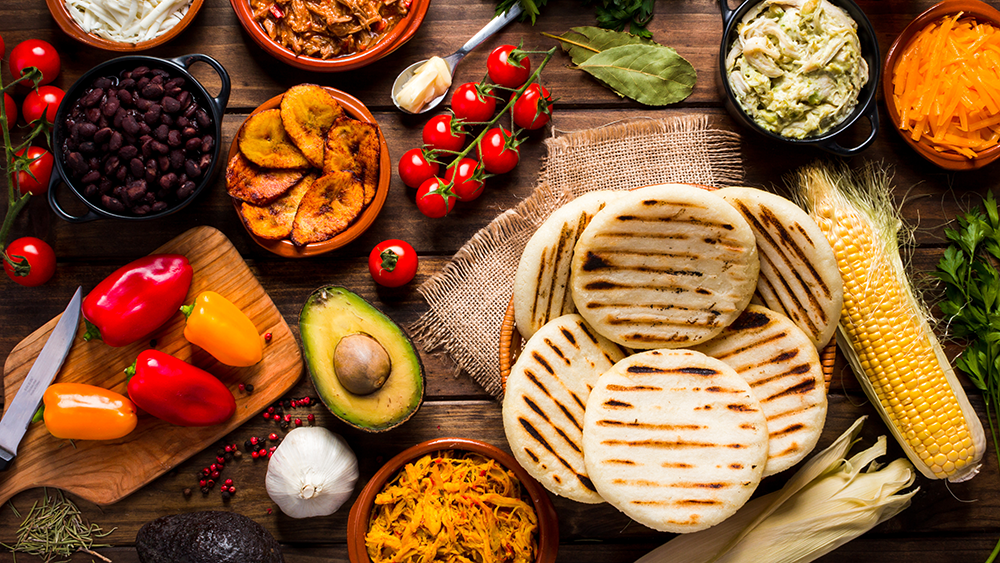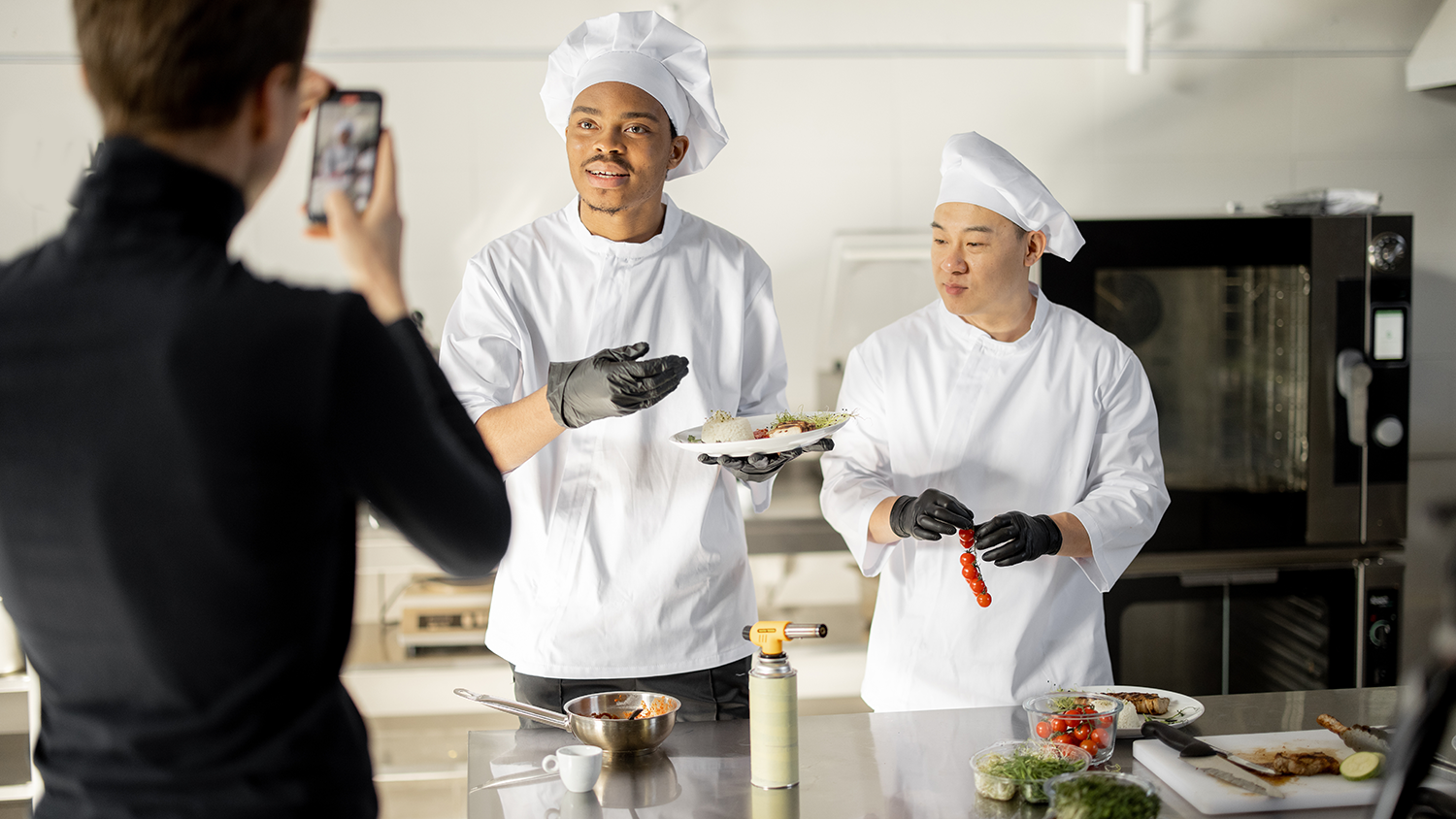By Jill Goodwin, Contributor
Visual branding is crucial for all businesses because it helps shape customers’ overall perception of your business. But in the restaurant and food industry, it’s even more important.
We’ve all heard the phrase “we eat with our eyes” — and for good reason. This centuries-old expression holds an indisputable truth. People tend to connect with visuals far faster than they do with other forms of communication, such as text. It also breaches language barriers, making it more accessible.
A restaurant’s visual narrative helps shape its brand identity and the quality of the food it serves. Through your visual marketing efforts, you want people to instantly understand the style of cuisine, restaurant atmosphere, and food culture.
The Importance of Visual Storytelling in the Restaurant Industry
Visual storytelling is all about using images and videos to create a compelling narrative for consumers to identify with, and to follow. Food, in particular, needs to be presented in an inviting and engaging way in order to compel people to want to eat it.
Three of the most important things to remember about visual storytelling in the food industry are:
Creativity. There are so many restaurants vying for customers. What makes yours special? In order to craft a truly compelling visual narrative with your restaurant identity, there needs to be an element of creativity and innovation.
Authenticity. The food and restaurant content you create needs to be true to the heart of your brand. Depictions of dishes should be accurate to quality, size, and general appearance, as well as reflect something true to the cultural or stylistic qualities of the restaurant.
Consistency. Consistency shows people that you’re committed to a high standard. Your visual content should always remain consistent in presentation, aesthetic, and flavor.
These three aspects of visual branding can act as a guide for helping you curate images, videos, and written content that customers will respond to in a more emotional and effective way.
An extra tip: Remember to stay focused on quality. Quality food, quality ingredients, and quality photos!
6 Ways to Create a More Compelling Visual Narrative for Your Restaurant
A visual narrative is like a story or concept you sell the audience which makes your brand feel more relatable, trustworthy, and authentic. Here are six fresh ways to achieve that:
1. Understand and Define Your Audience
One of the first and most fundamental things any brand should do when establishing its visual narrative is to perform in-depth audience research. The more you know about the kind of consumers you’re targeting, the easier it will be to fulfill their expectations and desires.
For instance, if your audience is mostly families with children, you’ll want to create visual content that caters for large groups, share-friendly meals, and food that people of all ages can appreciate.
Alternatively, if your target audience is high-earning singles and couples, you’ll want to shift your narrative into a more experimental and refined direction. Showcasing unique elements of your dishes will become more important, as will highlighting what makes them stand out.
2. Spend Ample Time on Presentation
Once again, we eat with our eyes! Consumers will be far more likely to connect with the concept of your restaurant if you know a thing or two about how to plate (or package) your food. Give your chefs some creative reign to explore different presentations of food and provide presentation training if they need it.
On social media, visual presentation is everything, and the competition is steep. Use color and texture to create incredible-looking dishes that get people drooling from the other side of the screen.
3. Invest in a Professional Food Photographer
While we’re on the topic of presentation, let’s talk photography. Even some of the best-looking dishes in real life can fall flat when photographed in an unskilled way, which can damage your restaurant's reputation and discourage people from wanting to take a bite.
Remember: your social media presence is how most people will be introduced to your restaurant, so the first impression needs to be good. Don’t leave restaurant or food photography to an amateur. Professional product photographers specializing in food are widely available and can dramatically improve the narrative of your brand.
4. Show Guests More Than Just Food
Part of establishing a visual narrative is delving into the environment around the product, not just the product itself. People are interested in the people, places, and ingredients that go into making the food they eat. Sharing that part of your brand can make you more trustworthy and likable.
Many restaurant brands have had success sharing visual content about the chefs, waitrons, and bartenders that make the magic happen, as well as implementing employee advocacy strategies.
Stories help consumers tap into a more emotional perspective that can be highly beneficial for brand development and loyalty.
5. Develop a Distinctive Color Palette
This one goes hand in hand with food photography and presentation. After all, we are focusing on visual narrative, and what is more visual than color?
While there’s no need to rule out any parts of the rainbow when it comes to curating your food, developing a distinctive color palette can help your restaurant brand stand out from the crowd and create a more recognizable identity.
6. Provide History and Context to Your Food
Similarly to how stories and content about restaurant employees can help develop a more emotional narrative, providing context about the history of your cuisine can also be beneficial.
If your restaurant has roots in a particular culture or style of cuisine, share it with your audience — they want to know! Plus, an emotional or passion-driven backstory to any brand is a powerful tool for cultivating deeper relationships with customers.
When people understand more about what drove your restaurant to come to fruition, it will help them see your brand in a more human context that they relate to.
A Selling Point
By using these tenets of visual storytelling to build up a strong restaurant identity, you can make sure that your business is always perceived as consistent, enticing, and fresh. And that’s exactly what customers are looking for.








